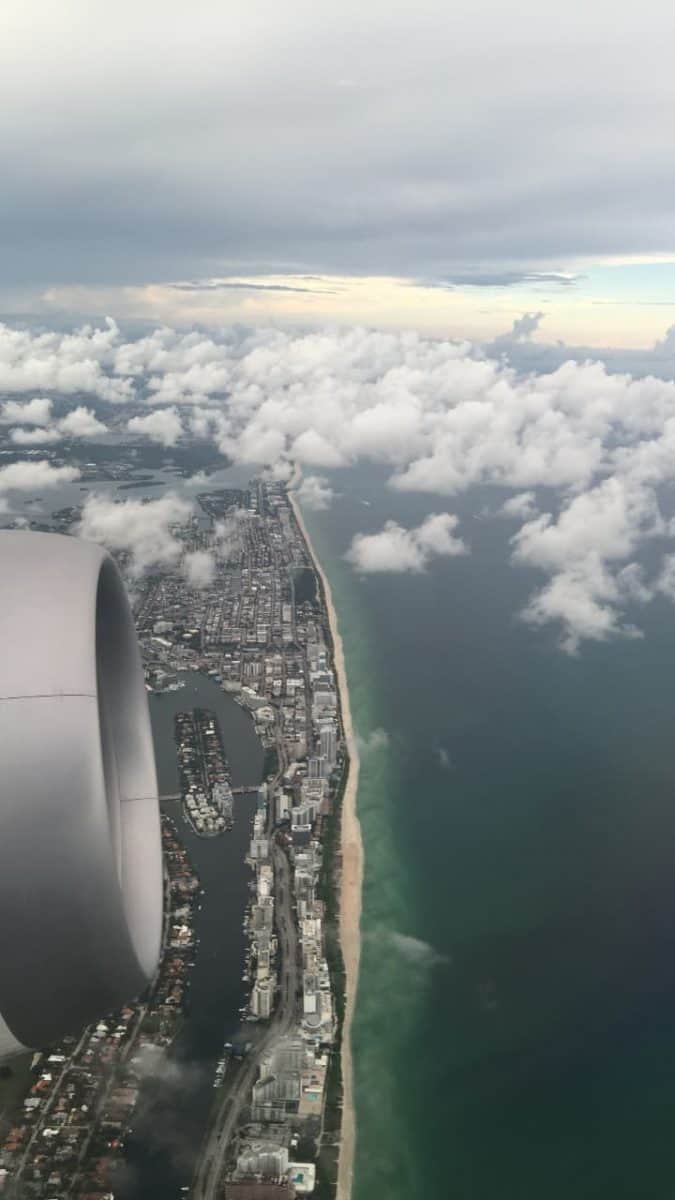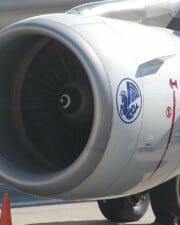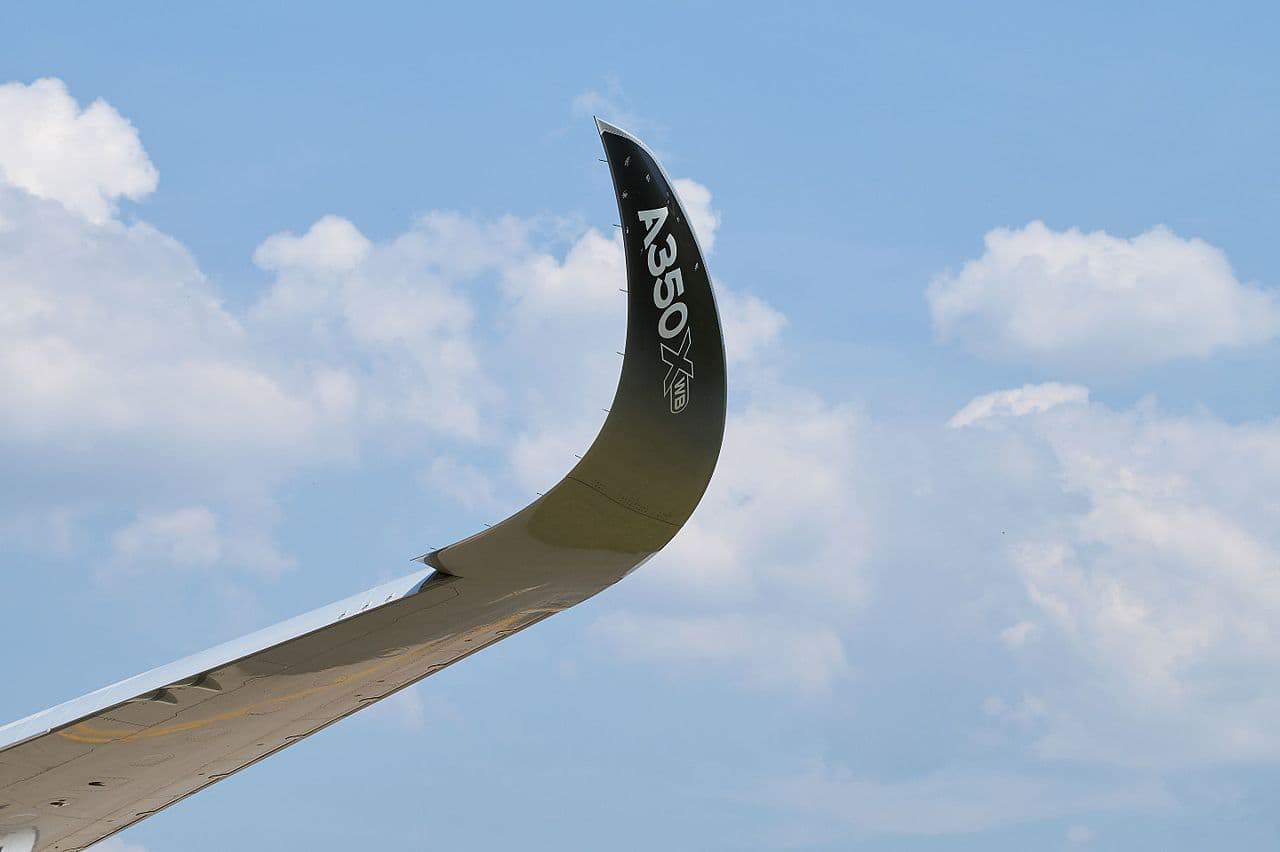When you’re on an airplane, you sometimes notice how high the plane is flying because the pilots always mention this information over the loudspeaker. If you pay attention, you’ll notice that the planes get to a certain altitude and then stop. You may wonder how high planes fly and why they fly at that particular altitude. So let’s get those questions answered.
Table of Contents
How High Do Airplanes Fly?
Most often, commercial airplanes fly anywhere between 30,000 and 42,000 feet in the air, which equals five to seven miles high. Why? The main reason is fuel efficiency. Put simply, airplanes use less fuel in higher altitudes where the air is thinner, increasing the efficiency and saving them money at the same time.
The Altitude Sweet Spot For Maximum Efficiency
The engines on airplanes run more efficiently when they are run close to their maximum RPM limits, which doesn’t happen in a lower altitude. In fact, a lower altitude can put too much strain on the engine and cause it to run at a higher speed than what it is able to handle. This means a less-efficient engine that costs money and puts a strain on the entire plane.

Higher altitudes mean less thrust for the plane because the air is thinner yet a high compression ratio and thermal efficiency can be maintained. The plane gets a much higher true air speed (TAS) than it would at a lower level because planes are always able to fly faster once the engine is burning less fuel. There is also much less resistance, or drag, at a higher altitude.
The Ideal Altitude for Lift, Thrust and Drag
Both lift and thrust depend on how dense the air is, which means that the ideal lift and thrust only happen at higher altitudes. Since lift and thrust are the two most important aspects of the plane’s ability to fly, this statistic is important. More thrust, which is forward acceleration, is needed when the air is thicker so you would need less thrust when you’re flying where the air is thin.
Commercial turbo jet airplanes usually fly below the speed of sound and can weigh quite a bit. When they fly at 30,000 feet, they get less drag and therefore can reach those top speeds safely. Supersonic aircraft, including spy planes and fighter planes, can fly much higher and therefore resist drag better. They can produce greater thrust so that this thinner air doesn’t interfere with the engine’s efficiency.

What Happens If A Plane Flies Too High
The height at which an airplane can fly efficiently is always affected by four things: thrust, drag, weight, and lift. Air is considered a fluid when it comes to the flight of an airplane and if planes fly too high — that is, over 42,000 feet in the air — this “fluid” won’t work the way that it’s supposed to work and may even cause efficiency problems with the engines.
Planes and Their Altitudes
If you’re curious about some of the planes that have flown the highest in the past, you might be interested in these facts:
- The Concorde has flown higher than any other commercial plane, attaining a height of 60,000 feet.
- The SR71, which is a military plane, has flown about 90,000 feet in the air.
- The highest that a business jet can fly is 51,000 feet.
- The highest that a commercial airplane can fly is 45,000 feet.
- Most military planes fly at around 50,000 feet and sometimes higher.
- Some rocket-powered planes can fly as high as 100,000 feet but they are specially designed for this purpose.
These rocket-powered planes are used mostly to collect data and are the only planes that can fly this high. Today, there are no business or commercial airplanes that are able to fly at 100,000 feet. It just isn’t possible.
One of the reasons why flying above, say, 50,000 feet is so difficult is because the air can actually become too thin so continuously burning the jet fuel needed to fly at these altitudes is extremely difficult, if not impossible.

There are, however, some exceptions. For instance, in 1976 the SR71 Blackbird set records by flying at over 85,000 feet and at speeds of up to 2100 miles per hour. This is the exception rather than the rule, which is why most planes don’t even try to set these types of records. In many instances, it is merely too dangerous to attempt to do this.
In addition to the SR71, which is no longer flying, the U2 is also able to fly higher than average because it can reach an altitude of around 74,000 feet. The U2 is a subsonic plane with wings that are very long and thin, making it easier to get the lift it needs to fly efficiently at higher altitudes.
Other planes that have achieved flying at higher levels include:
- Douglas D-588-2 Skyrocket: 83,235 feet in 1953
- Lockheed F-104 Starfighter: 103,389 feet in 1959
- X-15: 353,200 feet in 1963
- Mikoyan-Gurevich Ye-266M MiG-25: 123,520 feet in 1977
- Grob Strato 2C: 60,897 feet in 1995
- SpaceShipOne: 367,490 feet in 2004
As you can see, flying at a high altitude isn’t impossible even though most commercial and military airplanes do not try to break any records when it comes to this feat.
Related Posts












